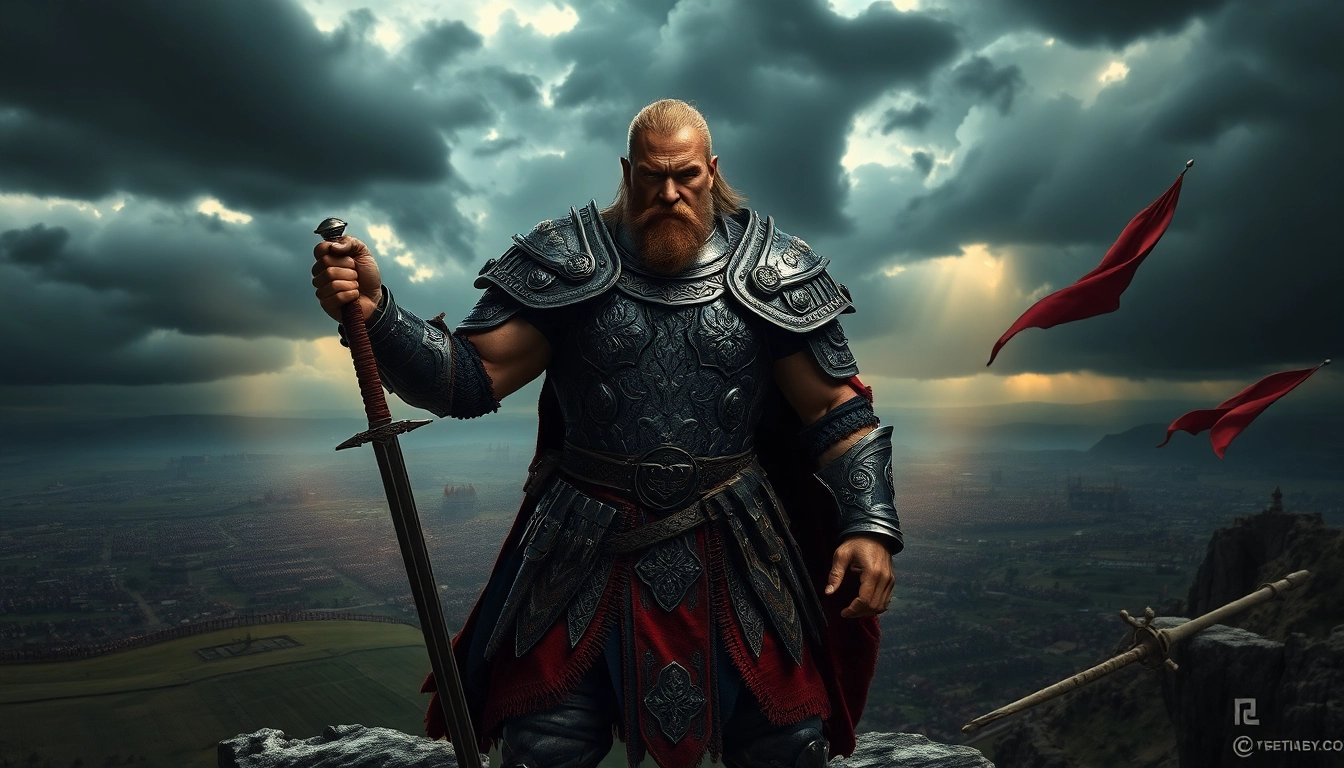Understanding the Role of Warlords in History
Defining Warlords: More than Just Leaders
The term “warlord” conjures vivid images of charismatic leaders commanding armies, often associated with conflict and conquest. However, a deeper examination reveals that warlords are multifaceted figures, serving not only as military leaders but also as political players, social influencers, and economic strategists. They typically arise in environments where state authority is weak or fragmented, assuming roles that blend legitimate leadership with coercive power, hence deviating from the traditional notion of governance.
The Historical Context of Warlord Power
Warlord dynamics have existed throughout history, particularly in regions where centralized governments have collapsed or failed to maintain order. From ancient China during the Warring States period to modern-day conflicts in Afghanistan and Syria, the historical context surrounding warlords provides insight into why they emerge. These leaders often govern through a mix of loyalty, fear, and the provision of goods and services, filling the vacuum left by absent or ineffective governmental institutions.
Famous Warlords and Their Impact on Warfare
Throughout history, certain warlords have left an indelible mark on the tactics and strategies of warfare. Figures such as Genghis Khan, who unified the Mongol tribes and established one of the largest empires in history, exemplify how warlords can alter the geopolitical landscape. His strategies, including mobility, psychological warfare, and brutal discipline, set the foundation for future military campaigns. Similarly, in more contemporary contexts, warlords in regions such as Somalia have taken control of significant portions of territory, influencing local economies and international relations.
Warlord Tactics: Battle Strategies for Success
Formations and Maneuvers: The Art of War
The efficacy of a warlord often hinges on their tactical prowess. Historical battles provide numerous examples of formations and maneuvers employed by warlords that have turned the tides of war. The famous phalanx formation of the ancient Greeks, used effectively by warlords like Alexander the Great, demonstrated the power of unity among infantry units. On the other hand, the Mongol horse archers, under Genghis Khan, showcased the success of mobility and ranged attacks in creating confusion and exploiting weaknesses in enemy formations.
Cultural Influences on Warlord Strategies
The strategies adopted by warlords are heavily influenced by their cultural backgrounds. For instance, in feudal Japan, samurai warlords adhered to the Bushido code, which emphasized honor, loyalty, and the warrior spirit, affecting not only their battle strategies but also the motivations behind their conflicts. This cultural lens reveals how warlords adapt their military approaches based on societal values, ultimately affecting the success of their campaigns.
Lessons from Historical Battles
The study of historical battles led by warlords offers valuable insights into leadership and strategy. For instance, the Battle of Hastings in 1066, where William the Conqueror employed feigned retreats to disrupt the opposing forces, underlines the importance of psychological tactics. Similarly, the adaptability of troops, as exemplified by the Danish king Harald Hardrada during his campaign, reminds modern leaders in both military and civilian contexts of the necessity of flexibility in the face of changing circumstances.
Modern Interpretations of Warlords in Media
Warlords in Video Games: Cultural Reflections
In popular culture, the archetype of the warlord is often explored through various mediums, notably in video games. Titles such as warlords immerse players in complex strategic battles that echo historical themes of conquest and governance. These games often allow players to experience the intricate decision-making processes that warlords faced, reflecting both the allure and the moral dilemmas associated with power.
Films and Novels Featuring Warlord Archetypes
The portrayal of warlords in films and literature significantly shapes public perceptions of these figures. Movies such as “Gladiator” and “Kingdom of Heaven” dramatize the struggles of warlords within their historical contexts, emphasizing themes of honor, betrayal, and the human cost of warfare. Similarly, novels often explore the internal conflicts of warlords, examining their motivations and the burdens of leadership.
Impact of Digital Media on Warlord Mythology
The rise of digital media has transformed the mythology surrounding warlords. Social media platforms and online forums allow for greater public discourse about military history, creating a space where historical figures can be re-evaluated or romanticized. This democratization of narrative-building affects how new generations understand the concept of warlords, challenging established historical narratives and creating a more nuanced view of their legacy.
The Psychology of Warlords: Leadership and Influence
What Drives a Warlord to Conquer?
The motivations behind a warlord’s ambitions are complex and varied. Research in psychology suggests that a combination of personal ambition, socio-economic factors, and historical context often drive these leaders. Many warlords emerge in response to significant social upheaval, using conflict as a means to gain power, wealth, and legitimacy. This understanding can aid in analyzing current conflicts and forecasting potential future developments.
Personal Characteristics of Successful Warlords
Successful warlords typically exhibit certain personal characteristics that contribute to their ascendancy. Traits such as decisiveness, resourcefulness, and emotional intelligence often define effective warlords. For example, Tamerlane’s exceptional ability to adapt and innovate in military strategy, along with his ruthless efficiency, has often been cited as reasons for his success in establishing a lasting empire. Moreover, trustworthiness and the ability to inspire loyalty among troops and followers are crucial components of leadership in these chaotic environments.
The Role of Charisma in Leadership
Charisma plays a pivotal role in a warlord’s capacity to lead and mobilize forces. Historical leaders like Shaka Zulu exemplify how personal charm and a compelling vision can galvanize support and instill fierce loyalty among followers. Charismatic warlords often become symbols of hope or resistance for their people, motivating them to rally against perceived oppression, highlighting the emotional aspects of leadership in times of turmoil.
Contemporary Warlords: A Look at Modern Conflicts
Identifying Modern Warlord Figures
In contemporary conflicts, warlord figures remain prevalent, often emerging in areas plagued by civil strife, poverty, and political instability. Figures such as Joseph Kony of the Lord’s Resistance Army symbolize the modern incarnation of warlords, commanding significant influence through the use of guerrilla tactics and psychological warfare. Understanding these modern embodiments of warlordism is crucial for efforts in conflict resolution and peacebuilding.
The Consequences of Warlord Leadership Today
The ongoing influence of warlord leaders in modern conflicts raises numerous concerns. Their ability to destabilize regions, perpetuate violence, and disrupt humanitarian efforts can have long-lasting consequences. For instance, the rise of warlords in Yemen has exacerbated the humanitarian crisis, leading to widespread suffering among civilians. Addressing the impact of modern warlords is essential for international conflict resolution efforts and stability.
Strategies for Engaging with Modern Warlords
Engagement with modern warlords requires a multi-faceted approach that balances diplomacy with an understanding of the underlying socio-political dynamics. Strategies such as mediated negotiations, economic incentives, and fostering dialogue can help address the root causes of warlordism. Additionally, empowering local communities through development initiatives can create alternative paths for leadership that do not revolve around coercion and violence.








